The owner is describing the dog’s anxiety, aggression, or otherwise nervous or anti-social behavior. I’m hearing stories of attacks, lunging, barking, running away in fear, or other such symptom of aggression or anxiety. The owner is at their wit’s end as the issues are causing them to hate going out in public, dread encounters in the street, and fear any interaction with other dogs.
Invariably the next, self-diagnosed, cause of action is blurted out,
“My dog just needs more socialization!”
The typical course of action that the owner is considering typically falls along the lines of:
- Going to the dog park more
- Going to group obedience classes
Folks, forgive me as I get frank. If your dog is scared to the point of anxiety or aggression in the company of other dogs…what good will it serve your dog to be tossed in with other dogs?
If your dog acts aggressively around dogs and you keep throwing him or her around piles of other dogs at the dog park how on earth will your dog learn the skills for dealing with this stress in the company of everything that is making him stressed at a dog park?
If your dog has anxiety that manifests itself in anti-social or even violent ways, how will your dog benefit from being surrounded by a group of other dogs who are trying to be obedient and are likely a wild bunch themselves at a group obedience class?
Picture this. This may or may not be true but go with me.
You are TERRIFIED of public speaking. The very idea of it gives you cold chills and standing up in public brings on bouts of immediate vomiting.
Now imagine if your well meaning spouse or significant other simply required you to keep getting up on that stage day after day to make you get over your fear.
What do you imagine the results would be? Would you learn to get over your fear and deal with it?
Actually, that might happen. It would depend, of course, on the setting of the public speaking, the level of inner strength you had to recognize inner anguish and compartmentalize that emotion enough to overcome it, and more.
Guess what, folks?
Dogs don’t posses those self-actualizing realizations of ‘Hey, I’ve got a problem. I don’t feel good. What can I do to change this?’
No, dogs are much more instinctual animals. They are going to look for a coping mechanism for their stress and ‘dealing with the stress in a healthy and rational way’ typically isn’t in their holster.
More often than not the ‘fight or flight’ instinct will kick in and each successive return to that dog park is more terrifying than the last leading to a quicker draw from that holster into the fight or flight response.
You see, the person on stage in front of 1000 may eventually figure it out and get partially or entirely over their fear.
Or they may simply grow to dread their obligatory nightly presence in front of that crowd and simply learn to cope by public speaking, but public speaking in an awful way. Perhaps, in this imaginary scenario, their adaptation method is to simply blurt out a few unintelligible words as they quickly run off stage, therefore completing their obligation to ‘publicly speak’.
This is one of the paths I’ve seen the dog take. In the scenario where the owner insists that the dog simply needs more socialization and takes the dog to the dog park multiple times per week more often than not the dog simply keeps getting worse and quicker to make bad decisions. But in scenarios where the dog doesn’t appear to get worse more often I see them learn coping mechanisms which, plainly put, just suck.
I see that dog slinking around the dog park, doing his very best to simply avoid contact with other dogs. He’s not growing or working through a problem. He’s simply replacing one problem with another.
So what is the solution, you may ask? No more socialization? What about if that guy NEEDS to get on stage because his job depends on it.
Very good question.
The answer is not, NO SOCIALIZATION. Simply, the answer is socialization in a way that is healthy and positive.
This requires a few things:
- Preparation. If that guy is terrified to get on stage don’t you think he’ll benefit from some extensive training on how to deal with stress in groups? Don’t you think some instructive training on proper ways to construct a speech, how to gesture, intonations, and breathing exercise would benefit him a ton and send him into his scary scenario with learned skills? Of course. Sadly, most dog owners don’t do this. They’ve determined that the answer is simply ‘socialization’ so they throw their dog into the proverbial lions den without having taught him any skills for how to deal with the demons that reside there. Preparation means training. Teaching the dog how to relax. Teaching the dog impulse control and self control.
- Pacing. If that man is terrified of crowds of 1000, how about starting him with a crowd of 3? I can’t tell you how many times I’ve seen a terrified dog be thrown into the Thunder Dome that is the average dog park only to find him or herself completely overwhelmed by second 2. Now, in the past I’ve never been shy about my distaste for dog parks. Even if you have a well adjusted dog I think you should avoid them like the plague. But wherever your dog is right now in his or her ability to tolerate stress that is a threshold. If your dog’s threshold is no dogs, get him to one. If it’s one, get him to two. If it’s two get him to three and so on.
- Structure. I’ve mentioned that pacing is pretty important. Having said that, if you are skilled or are working with a skilled person you can often speed up pace if you have structure. For example, we’ll often have a dog who can’t handle the presence of one other dog and we can often introduce that dog into a training group of a dozen almost immediately. We can do this because we can create structure within the group of dogs and within the dog that is entering. I’m not saying that you SHOULD pace things quickly. I’m simply saying that at whatever pace you go make sure that you are creating proper structure within the group and the new addition.
- Obedience. If you want to get your dog’s ‘mind right‘ in order to have successful socialization the best way to do that is on the back of solid obedience training. No, I’m not talking about sit for a cookie or shake or roll over. I’m talking about solid obedience that can be relied on even when your dog is distracted or off leash. As I’m prone to say, you aren’t going to solve aggression or anxiety issues with good obedience. You need excellent obedience.
Folks, socialization IS important. But socialization is NOT throwing your dog into a group of other dogs to hope he or she works out those stress issues on his or her own without having been taught skills for dealing. Those skills for dealing are not going to be learned at the dog park and they are not going to be learned in basic obedience classes. Happy Training!


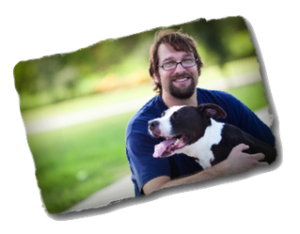
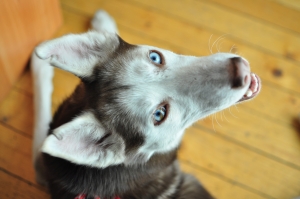
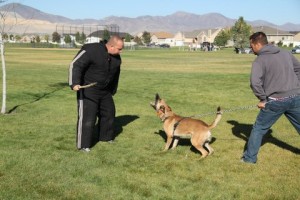
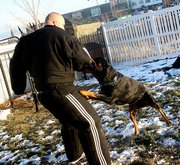
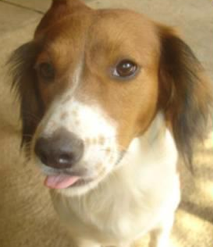
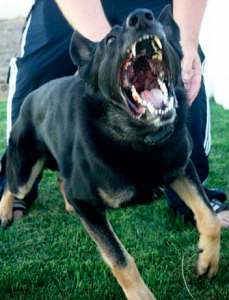



Follow Us!